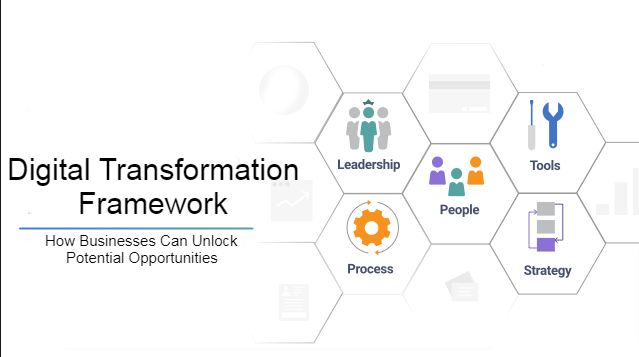Digital transformation is now essential for any organization looking to compete meaningfully. Technological advancements coupled with increasingly dynamic consumer needs demand companies revisit their operational models and infuse them with digital solutions. Data confirms that 80% of organizations that transform digitally report increased profits, with as much as 23% revenue growth over competitors.
Transformational leaders in business like Sanjiv Bajaj, Ratan Tata, Mukesh Ambani and other titans have embraced this shift and showcased the potential with each passing year. On the topic, Sanjiv Bajaj, Chairman and Managing Director of Bajaj Finserv, remarks, “We are seeing a significant adoption across different aspects of the digital world, even in financial services (which is a heavily regulated sector). Institutions, especially incumbents, will need to adopt digital as a way of life. That is why the requirement of very solid, stable and scalable cloud infrastructure becomes a prerequisite.”
Considering the underpinnings of digital transformation, it seems that a meaningful shift is only possible if a long-term strategy is implemented. Without it, enterprises will likely venture into a vast sea of transformation with no compass. And that precisely points to the relevance of a structured and collaborative digital transformation framework.
Read on for deeper insights into how such frameworks take shape.
Digital Transformation Framework: A Quintessential Element for Businesses to Think Anew
A McKinsey report reveals that approximately 70% of large-scale transformation processes are unable to reach their planned goals. This staggering number proves that there are roadblocks when actioning digital transformation. That’s precisely where a robust framework comes into play.
With a digital transformation framework in place, organizations can implement their digital transformation strategy systematically. A blueprint, in essence, functions as a structured guide to make the transition smooth and effortless.
Here’s a quick rundown on how such structured frameworks act as business enablers:
- Digitizes the planned business model
- Enhances talent buy-ins
- Promotes collaborative leadership
- Considers the customer when developing products and services
- Enables and encourages innovative thought processes within the workforce
In short, a structured framework helps businesses navigate the tricky landscape of the digital transformation process. It even supports an organization to reposition itself in the digital economy.
With the digital transformation market expected to reach $3.3 billion by 2025, leveraging technology is pivotal and needed if businesses are to stay relevant. That said, the digital transformation framework needs a top-down approach and has been followed by some of the best business leaders.
Good Transformation Frameworks: What They Entail
Digital transformation frameworks are the go-to resources that can safeguard organizations from digital disruption risks. Make no mistake, the shift to digital infrastructures has a lot of potential to be positive, but it can be equally disastrous. Without a clear plan, enterprises can overlook crucial elements and expose costly vulnerabilities.
With the proliferation of digital systems adoption, businesses must have a defined and realistic framework. These frameworks build on a repeatable process of strategic planning, diagnosis and implementation when it comes to achieving the desired transformation of any business.
Focussing on customer value, competitors, and market position enables an organization to exercise proper control of its levers rather than getting carried away by the technology’s shiny lights. These are the makings of a ‘good’ digital transformation framework. Such collaborative frameworks also help find fresh insights that lead to mutually beneficial outcomes for both customers and the company.
That said, a structured framework facilitates easy digital adoption, helping an organization manage issues related to cloud computing and massive data flows seamlessly. Some of the most noteworthy transformational leaders in business have successfully adopted digital transformation by executing a known-good framework.
Adopting the Right Framework: A Drastic Uptick in the Odds of Success
Around 60% of organizations have created new business models and realigned their strategies for an effortless digital transformation. That begs the question – how? While implementing a suitable framework helps accelerate the transformation process, choosing the right one helps avoid common pitfalls.
Here are some essential attributes to consider when implementing such business enablers:
- Assess the efficiency of an organization and identify specific bottlenecks that may hinder a company’s productivity
- Evaluate the technological infrastructure supporting the business process before adopting a suitable framework
- Orient the mindset of the team towards adopting new digital ways and shedding legacy processes
- Analyze the digital maturity of the organization to assess its digital readiness
- Understand the internal goals of a company and identify specific value drivers, helping scale the transformation process
- Achieve the required internal collaboration while considering the optimization of the business process
Despite following these strategies, the core elements of implementing a robust framework include:
- Leadership commitment
- Talent management
- Data strategy
- Customer-centricity
If renowned transformational leaders could carve a niche for themselves, it is because of adopting the right framework alongside working on these core elements.
Implementing a Digital Transformation Framework: The 3 Must-haves
A survey reports that approximately 65% of companies across the globe have increased their funding for tech or digital initiatives. Why not? Technology is now vital for businesses to keep up with a dynamic, ever-changing competitive landscape.
While implementing the right framework may not sound as easy as flipping a switch, it helps when it occurs in three phases:
- Start or the First Phase
- Structure or the Second Phase
- Scale or the Third Phase
While the first phase helps create a buzz and acts as a catalyst for the other stages, it is all about starting small and gaining wide acceptance for executing the transformation process. Even the best business leader believes that designing the right framework forms the roadmap to success.
The second phase is about enabling a business to accelerate digital execution by identifying the training needs and ironing out the kinks of phase one. Lastly, the third stage is about maximizing value and productivity. At this phase, companies can explore innovation and where transformational leaders can shine brightest.
A one-size-fits-all framework does not exist, so leaders must dig deep to innovate the best fit. That said, digital transformation does not thrive on technology alone but fosters a digital culture. After all, the right digital transformation framework helps companies stay relevant, agile, resilient, and future-ready.

